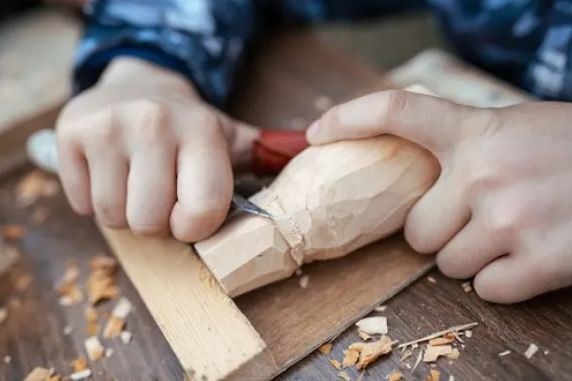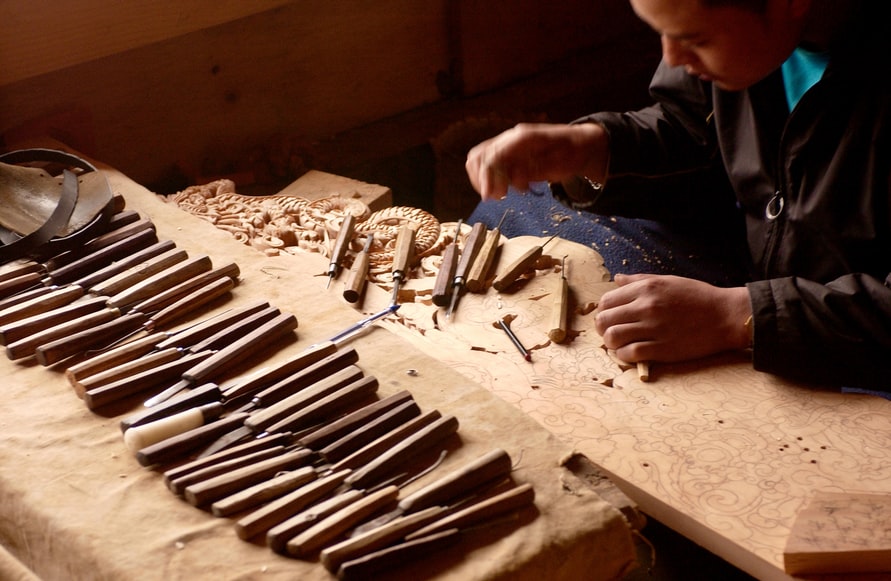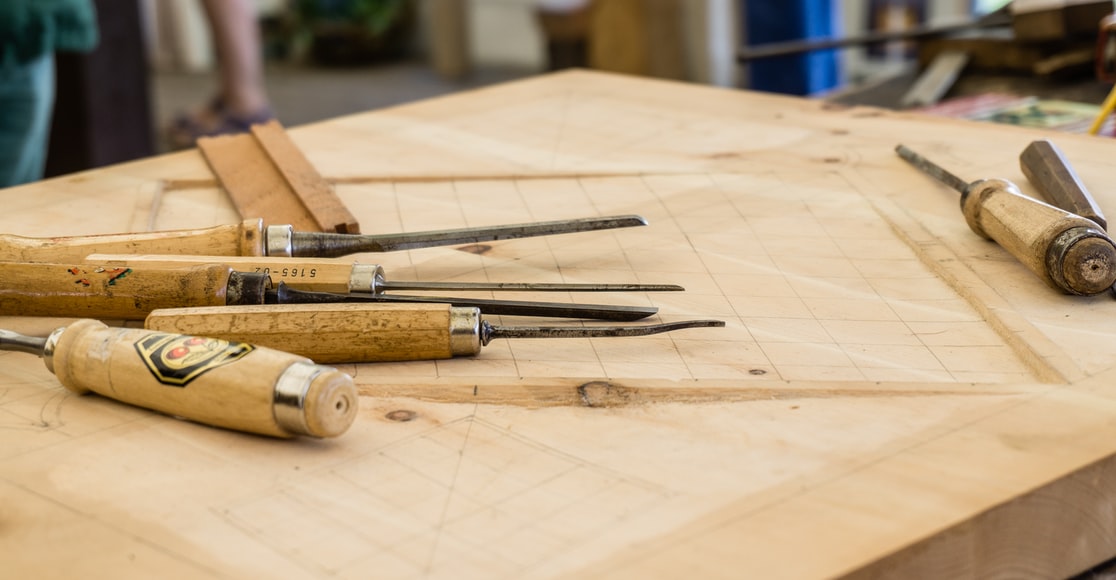Wood carving is a kind of woodworking in which figures or patterns are carved into pieces of wood using knives, chisels, and other hand-held carving tools. In addition to duck decoys and cufflinks, woodcarvers create furniture, home décor items, and even life-sized sculptures of humans or animals.
If you look closely at wood carvings, you might conclude that they are difficult to carve. To carve wood, on the other hand, you only need a knife and a chisel. It is excellent leisure or interest. It is even possible to make a profession out of it if you work hard enough.
Wood Carving Details
| Category: Art, Handicraft | Time: 30-60 min | Skill: Lots |
| Initial Cost: $ (0-50) | Space: little | People: alone |
| Long-Term Cost: Low | Makes Money: Can, but not always | Location: indoor, outdoor |
History of Wood Carving
There is evidence that carvings on a wood date as far back as the Paleolithic period 11,000 years ago, but we shall begin our historical review in the Middle Ages. The earliest known carving on wood is Shigir Idol, which dates from the same period. Carving crosses and other religious symbols like saints and angels from wood was a very early usage of timber by Christians for religious reasons. However, many wood sculpture masterpieces were lost to decay over time due to their fragility and susceptibility to water, insects, and fungus.
Tips to Start Wood Carving
Start your wood carving hobby off right with these helpful hints.
- Make sure you know how to use your knife correctly. Your tool should feel good in your hands and be suitable for the job at hand. Use a knife with a secure grip to reduce the risk of hand fatigue.
- Carving gloves should be worn. As a newbie, you should take precautions against being cut by your sharp instruments. It’s essential to put your new skills into practice and understand how to do them securely.
- The grain should be followed while carving. Working with hardwoods will be a breeze with this trick.
- Create your design on paper and then transfer it to your chosen wood type. You may also draw it on the block directly. You will be able to work more accurately and accomplish your goals this way.
What is equipment Wood Carving?
Carving Knives – Because of their adaptability and a wide variety of sizes, carving knives are an excellent choice for beginning woodcarvers. A carving knife is all you need for specific jobs. Make an outline on wood with your knife, carve out various-sized pieces, or add details.
Wood Carving Mallet – An excellent wood carving mallet is also a must-have for those just starting. Hit the end of tools like gouges, veiners, etc., with your mallet. With a mallet, you can create deeper cuts or cut through wood that is too hard to carve with only pulling or pushing the carving tool. Because wood has different densities, using hand pressure may make it more challenging to maintain control of the device when carving.
Chisels – You’ll also need a wide range of chisels in addition to sharp, high-quality knives. Depending on the size and form of the cut you want to create, various chisels have varying points. Even though some chisels have a flat, beveled edge, they may easily be distinguished from one another.
Gouges – A gouge’s handle and cutting action are similar to a chisel’s, but the gouge’s point is rounded. When pressed or struck with a carving mallet, gouges “scoop” out the wood. Small or big pieces of wood may be hollowed out, and they can also be used to form curves in the wood. They’re also helpful for rapidly removing timber. The “sweep” refers to the gouge’s curvature.
Venires – A veiners resembles a gouge in both the form and the handle it possesses. The veines, on the other hand, has longer sides and, when stabbed into the wood, forms a U-shape. It is referred to as a U-Gouge. It leaves a hollow “vein,” or thin groove in the wood when struck or driven through.
V-Tools – When it comes to the V-tool, it’s pretty similar to the veiner. In contrast to the U-shaped veiner, the V-shaped veiner’s tip is formed like a V. Both, on the other hand, are used for minor grooves and fine details.
Bench Knives – In terms of look and use, bench knives vary from carving knives. They feature a smaller blade and a considerably bigger handle for grasping. Think of an oversized, heavy-duty scalpel with a long, thick grip. However, it’s not the same knife as its illustrious forebear, employed in the kitchen.
Rasps & Rifflers – Your ability to work in detail will almost certainly increase by mastering these tools. Rasps & Rifflers means you’re all set to smooth away the rough edges in the nooks and crannies throughout your home. A rasp or a riffler will be your tool of choice for this task. Rasps resemble a file with more extensive, sharper teeth. Some are round and flat, while others are half-round. A riffler is held in the center and has two ends with differing points.
Cost of Wood Carving as a hobby
If you’ve never done wood carving before and want to get started, it’ll cost you about $100 to purchase everything you need.
Conclusion
It is best if you understand the many kinds of wood carving chisels available. You might be an aspiring artist or make carvings for a living. Having a complete set of wood carving chisels is critical, regardless of what the situation may be.
Woodcarvers must understand the purpose and proper usage of each kind of chisel or gouge they employ to be effective.


